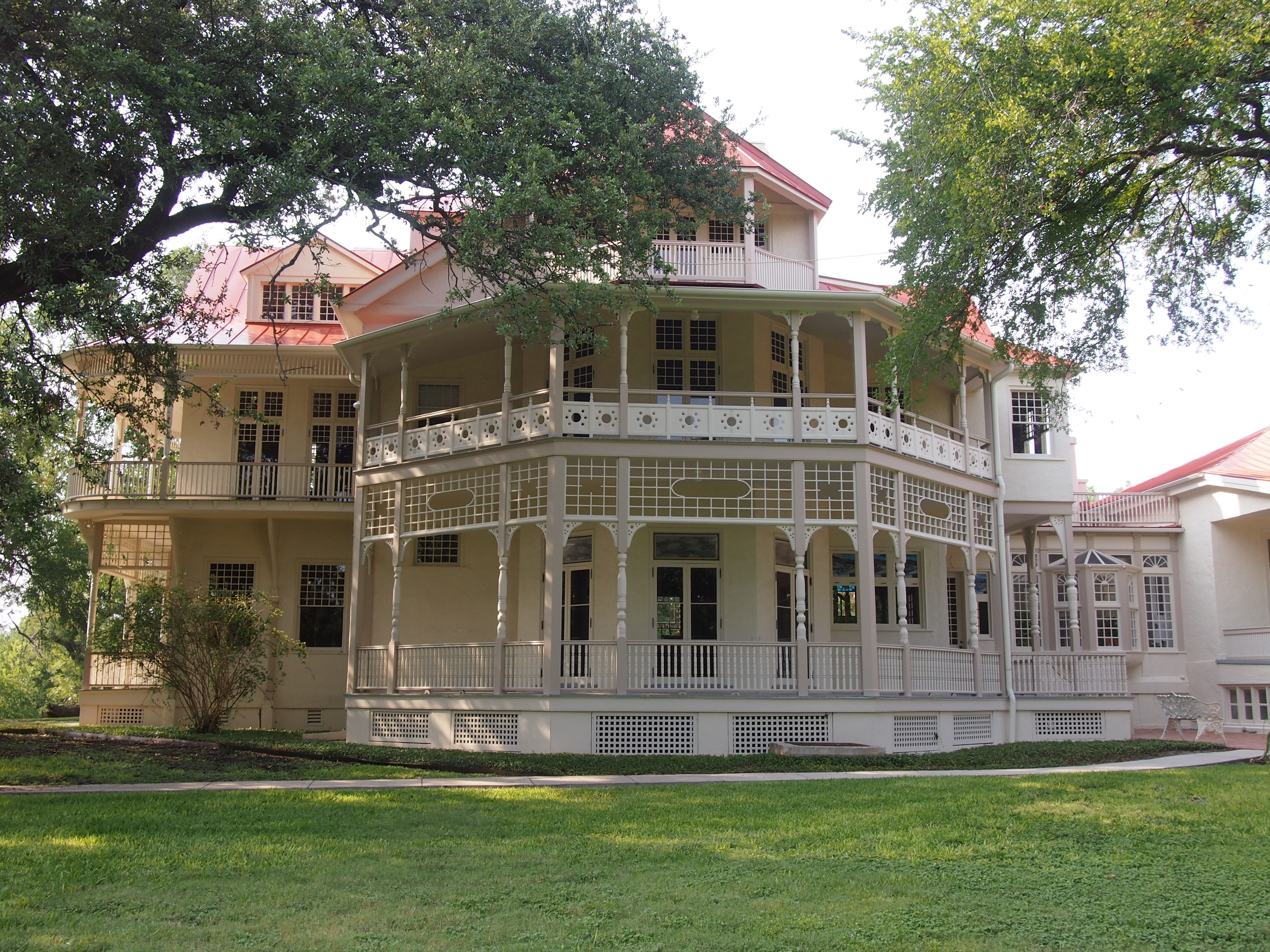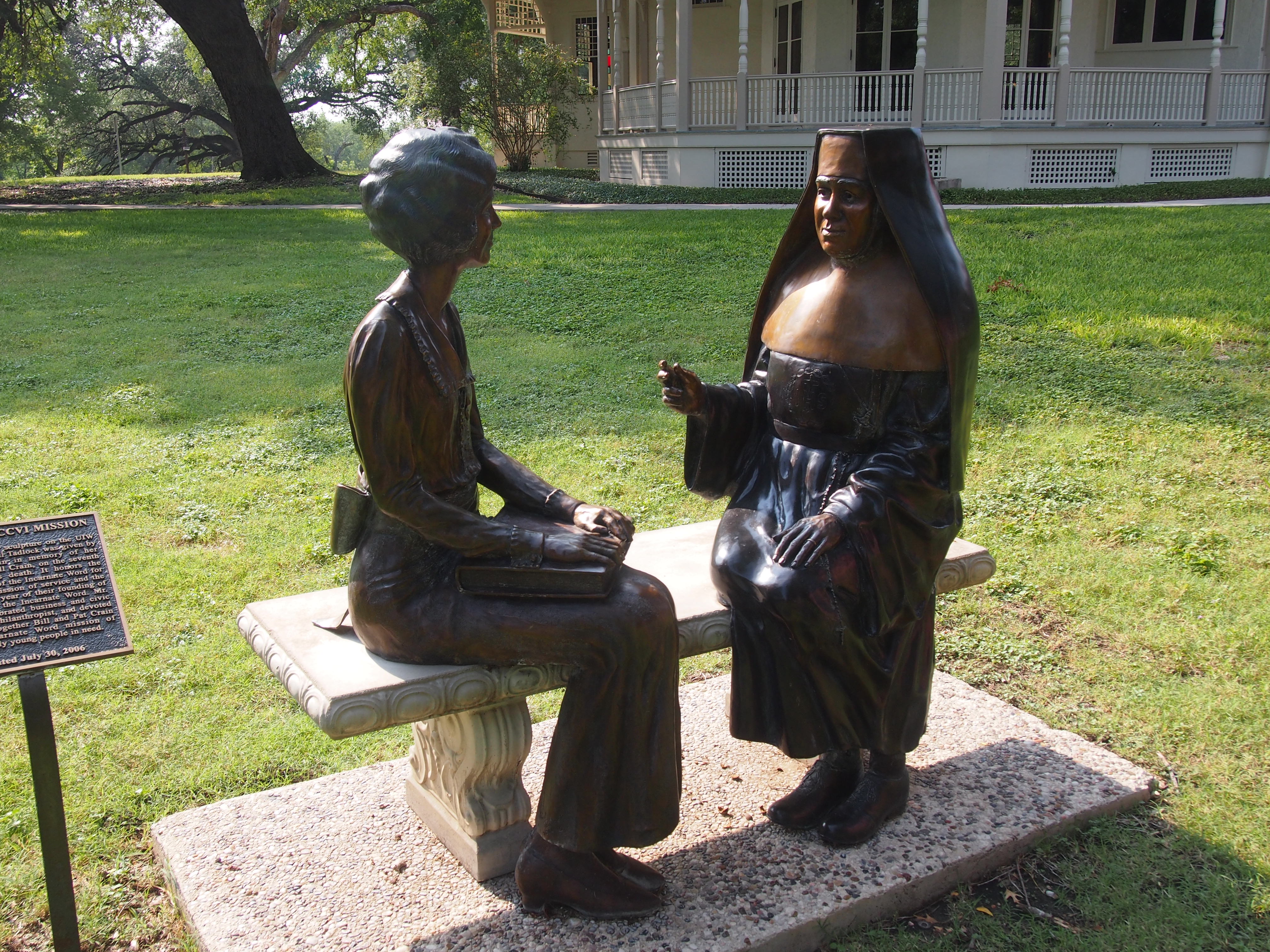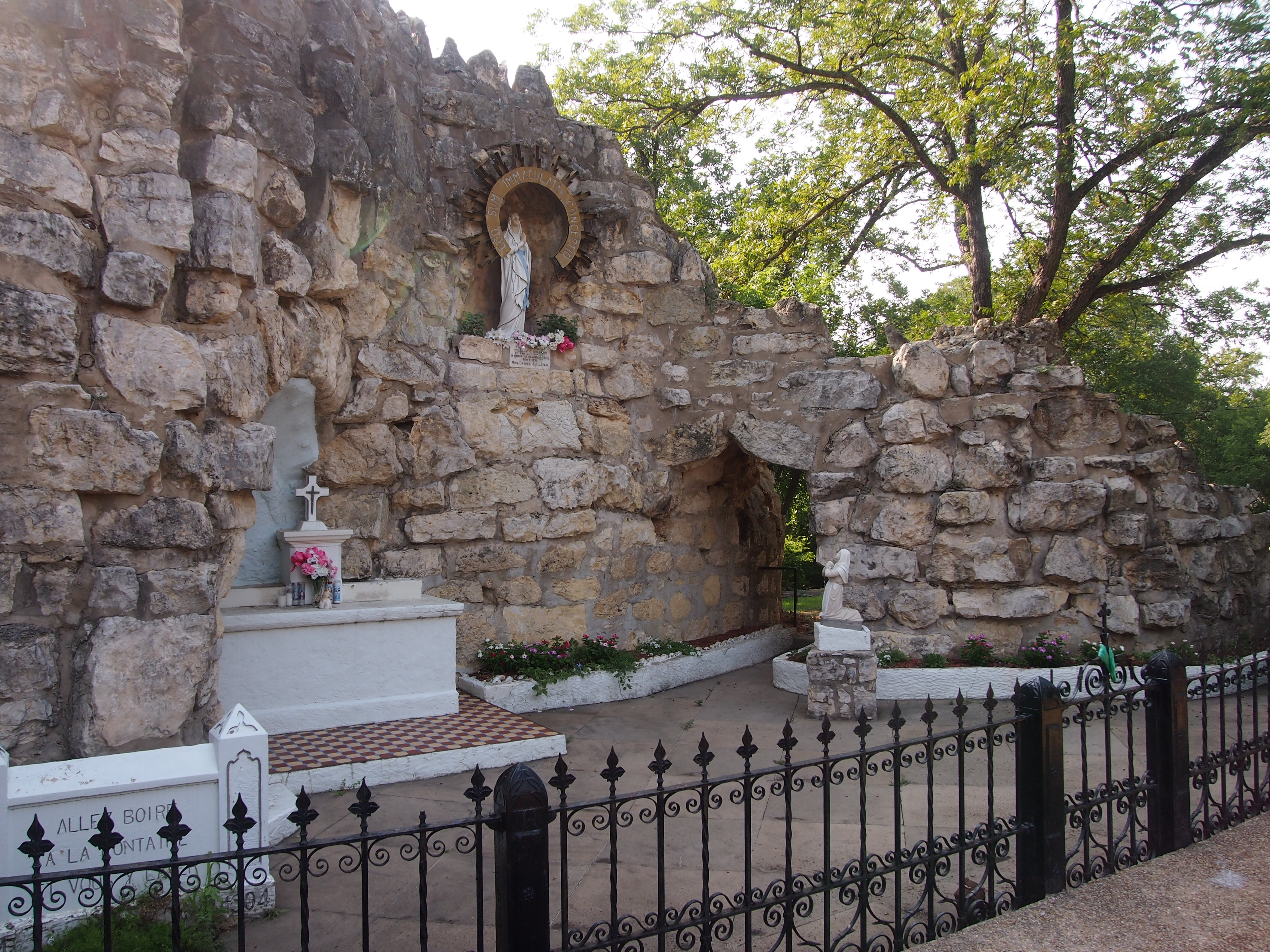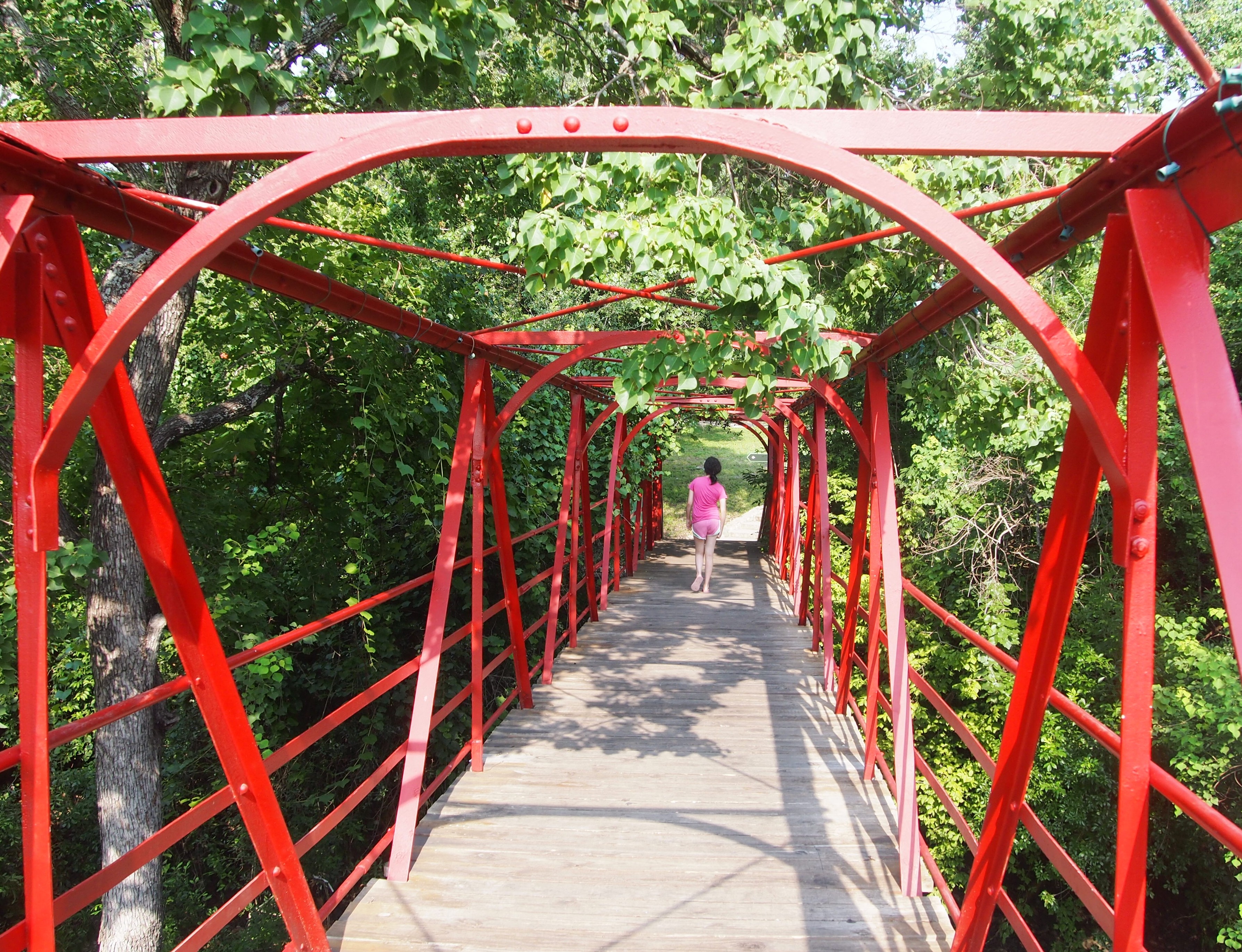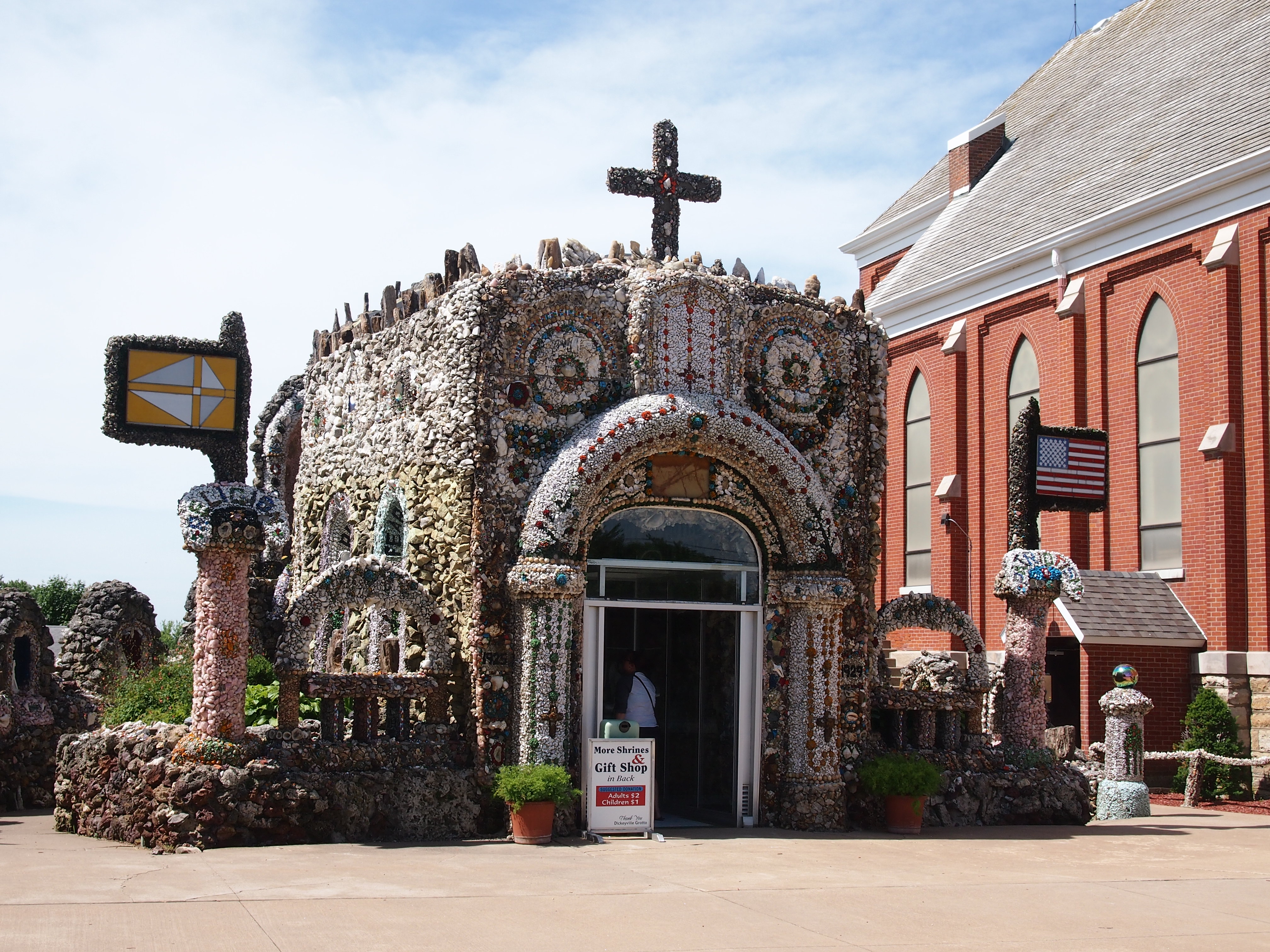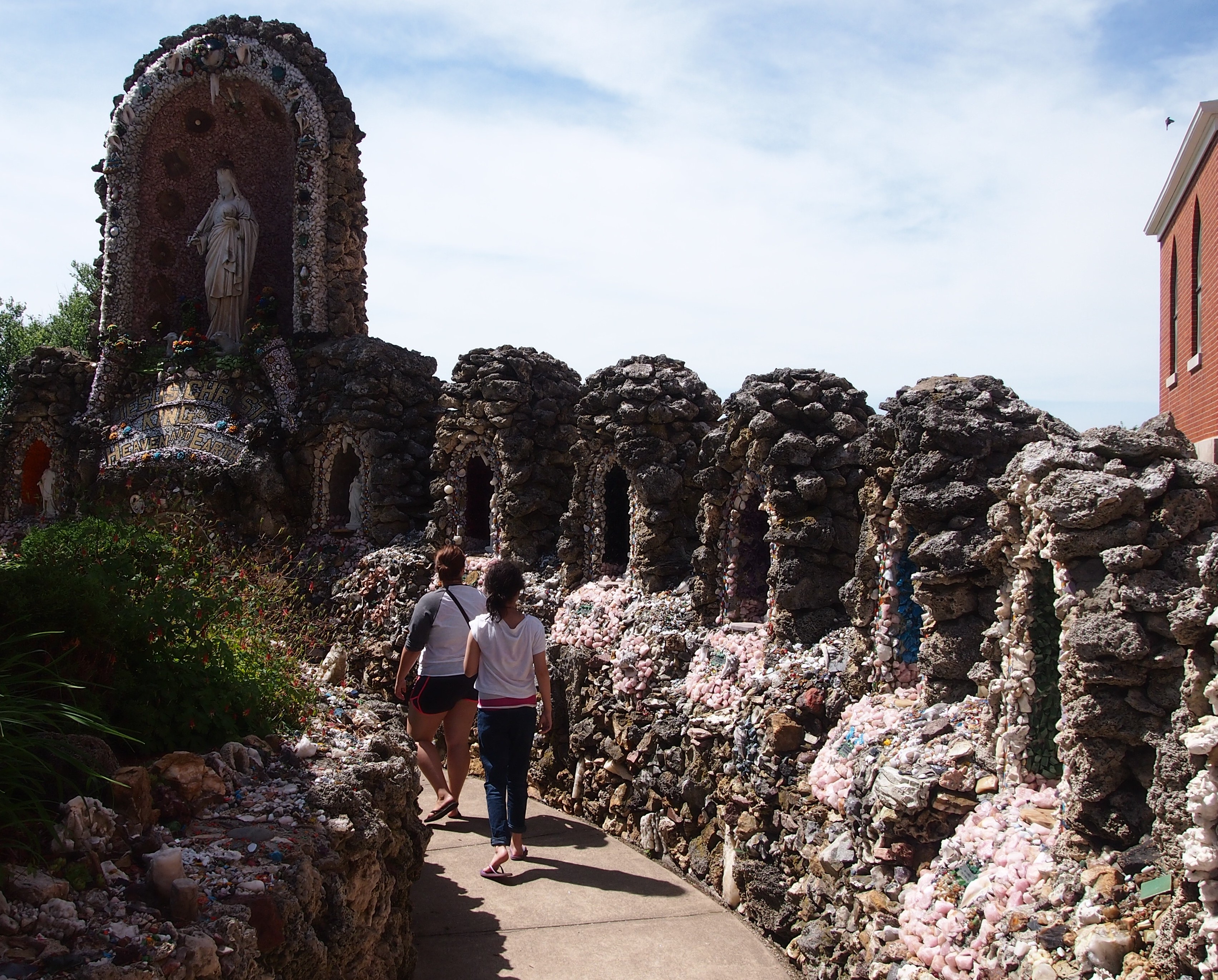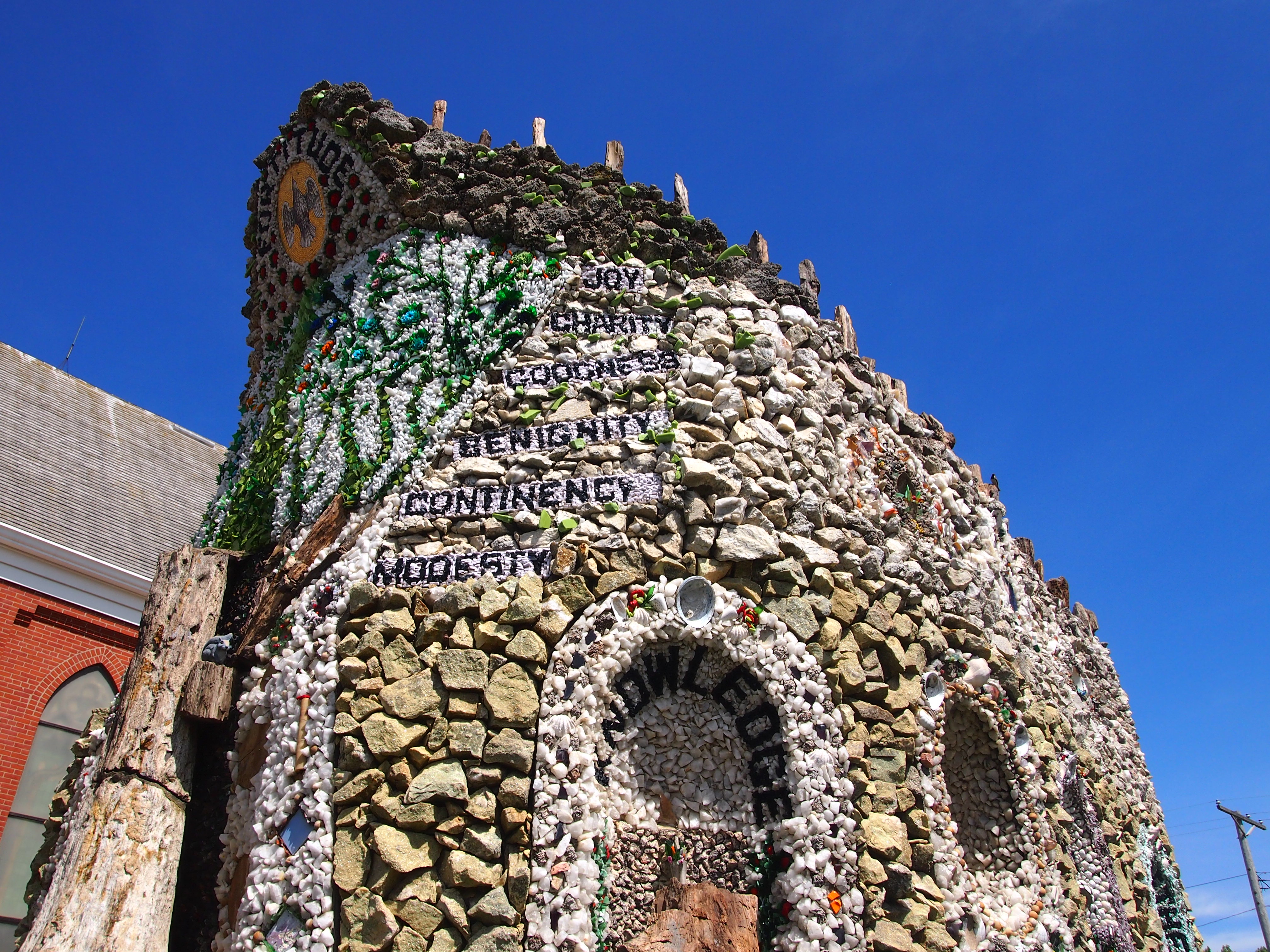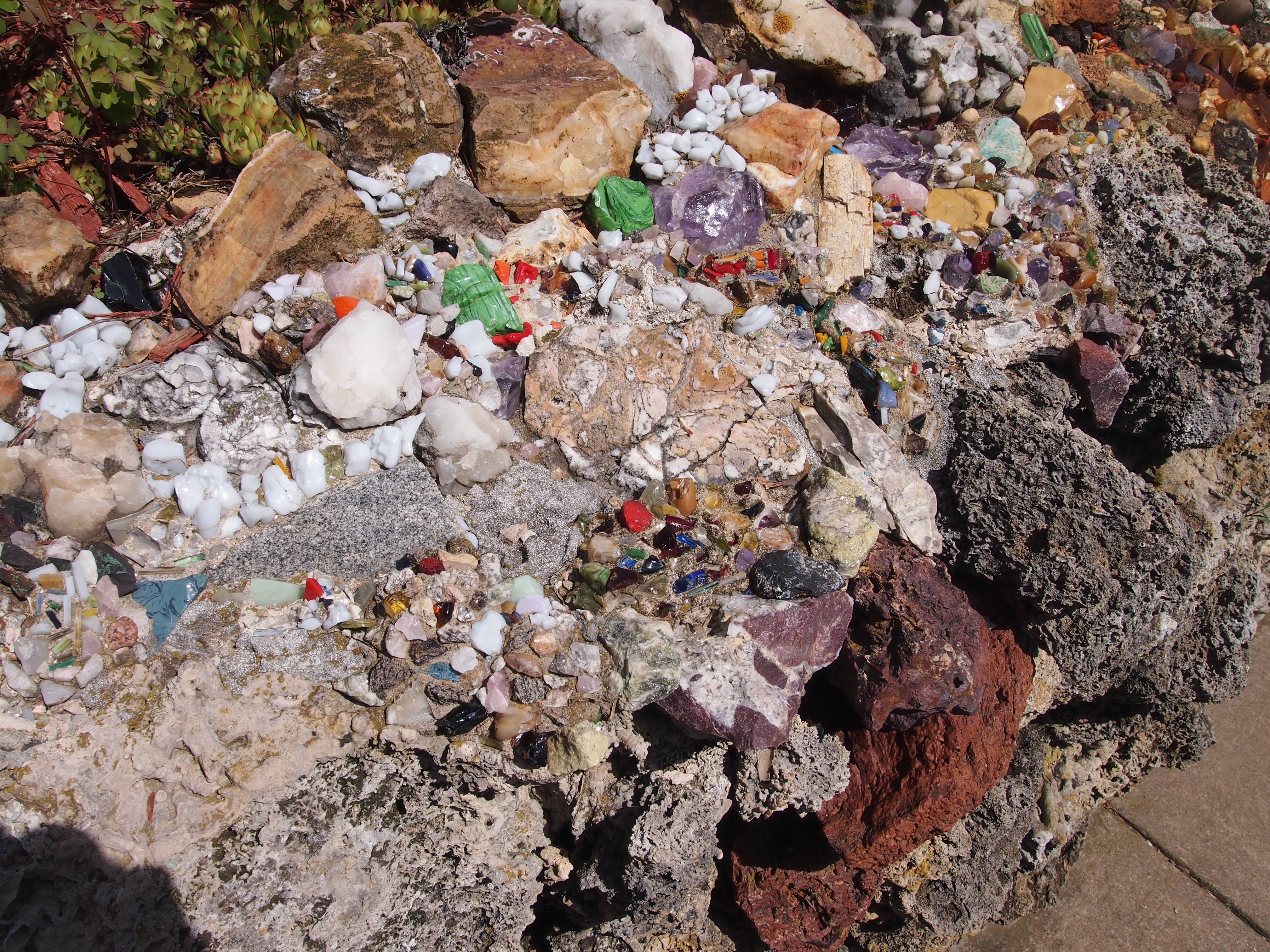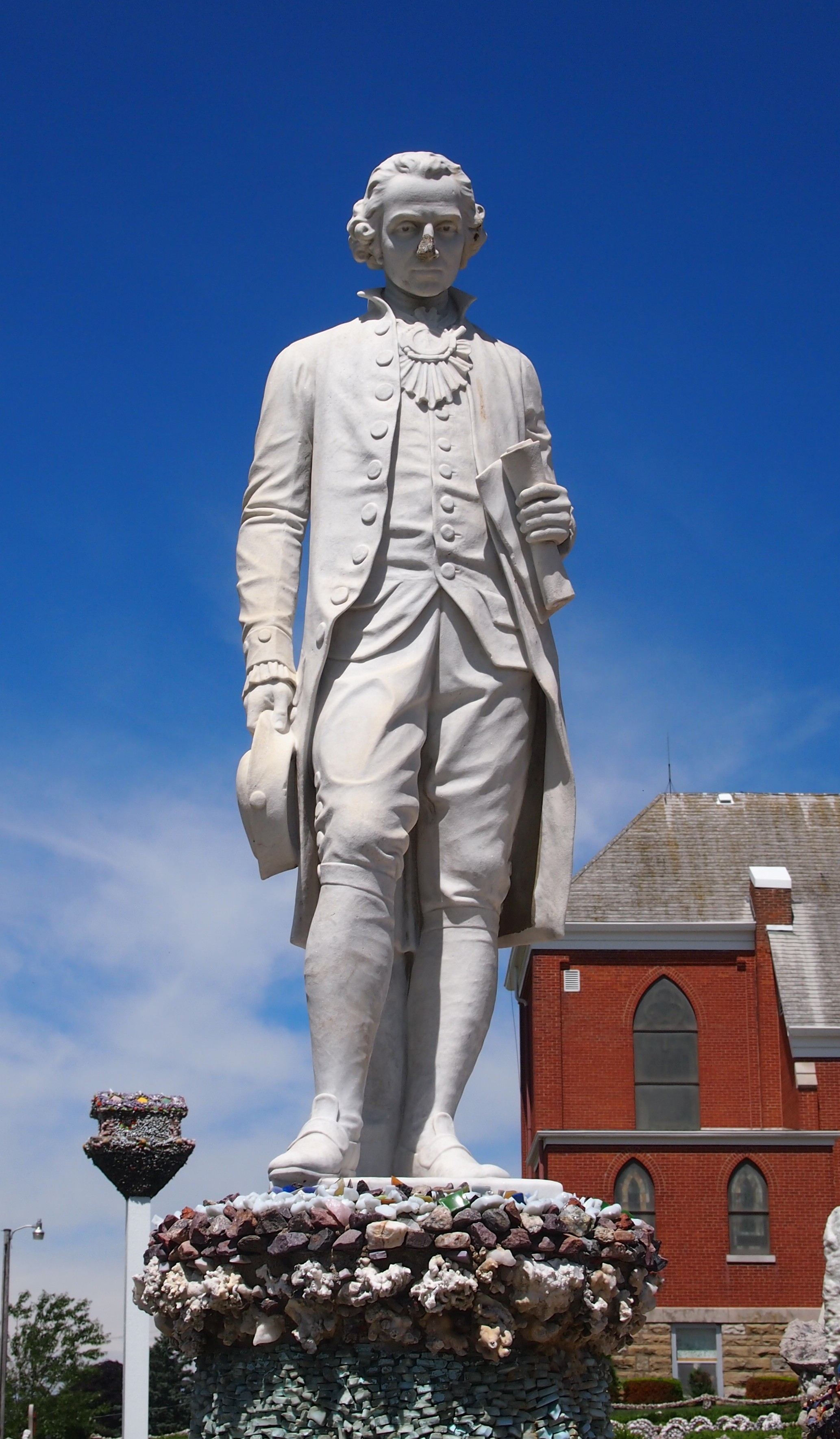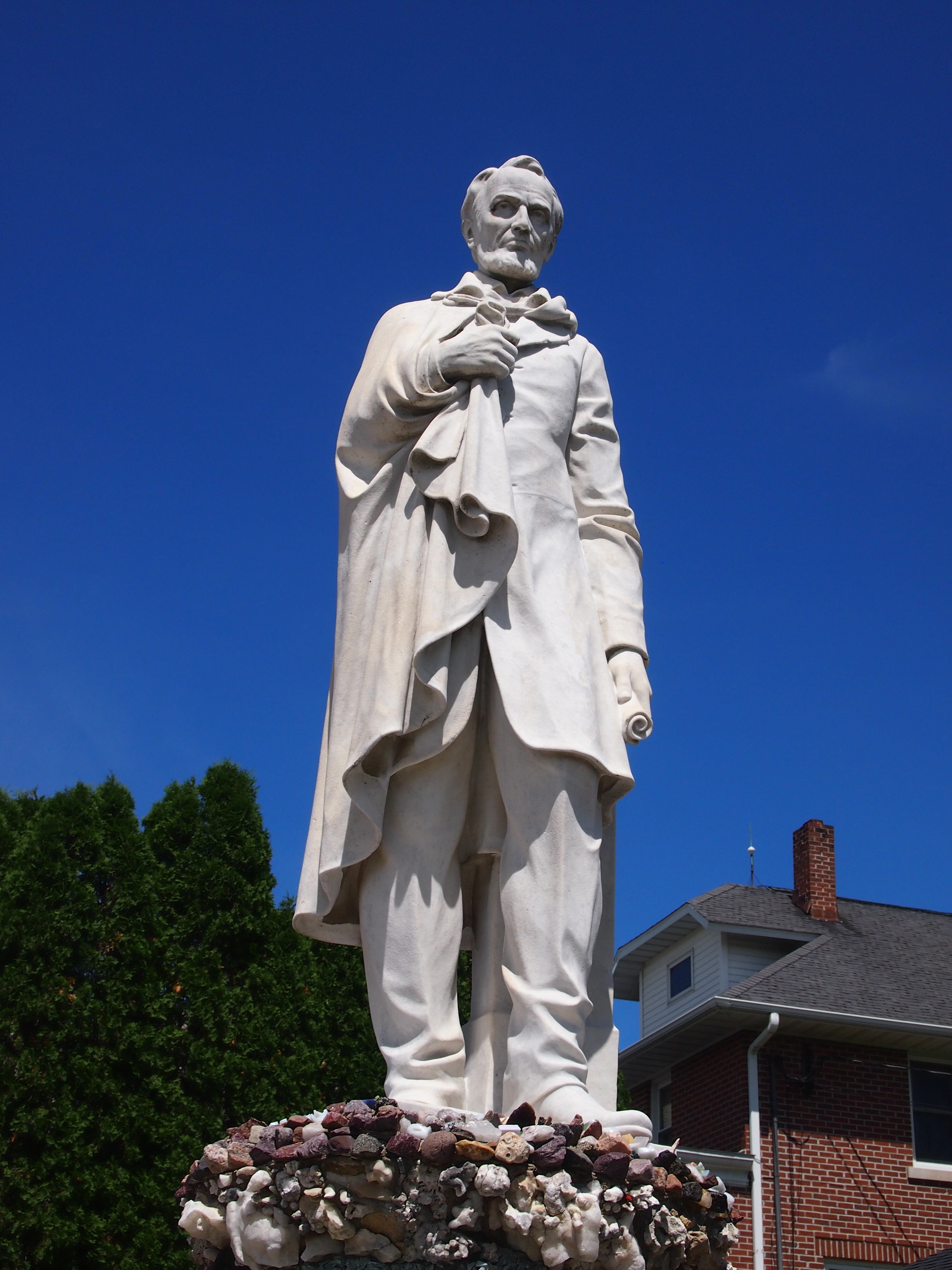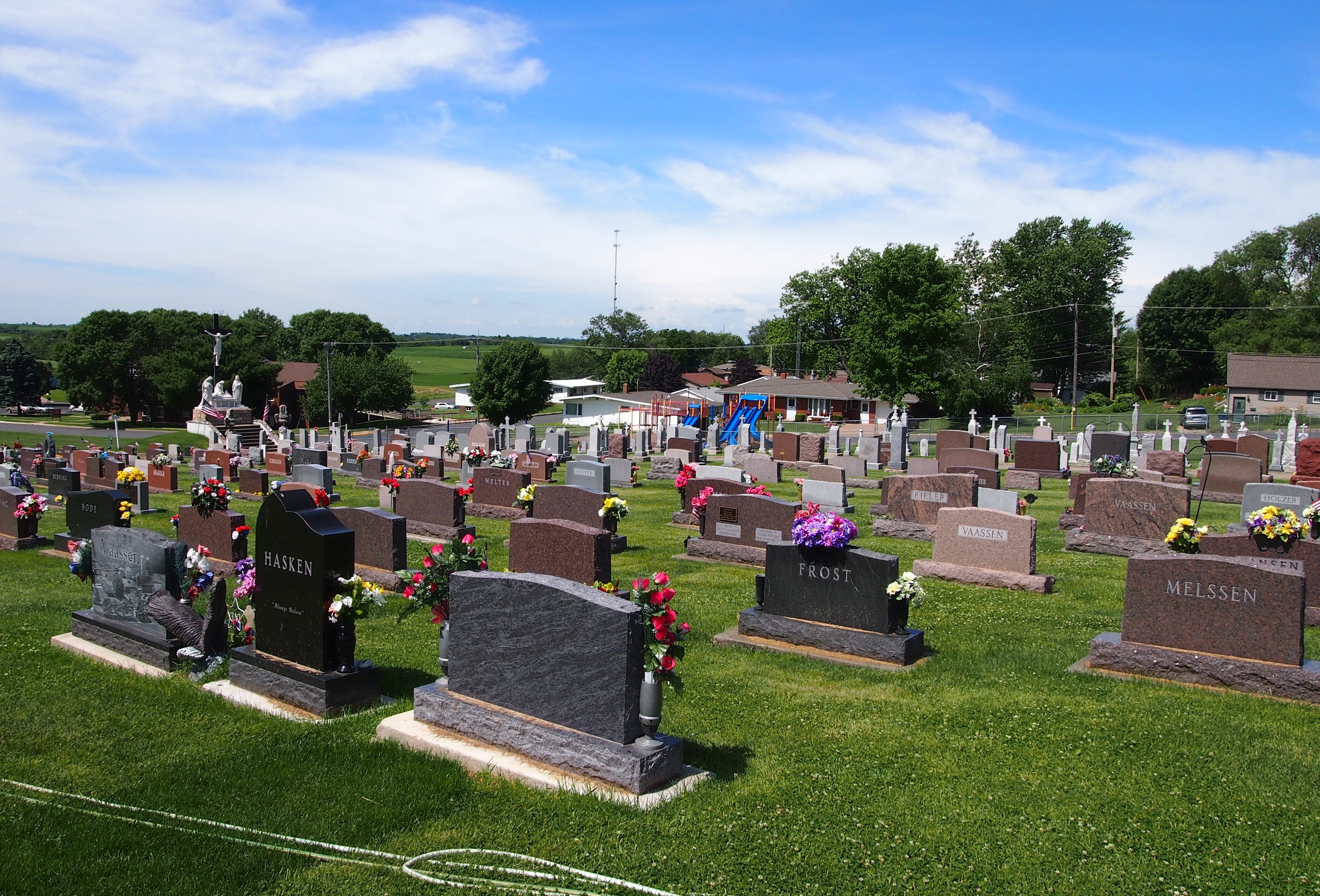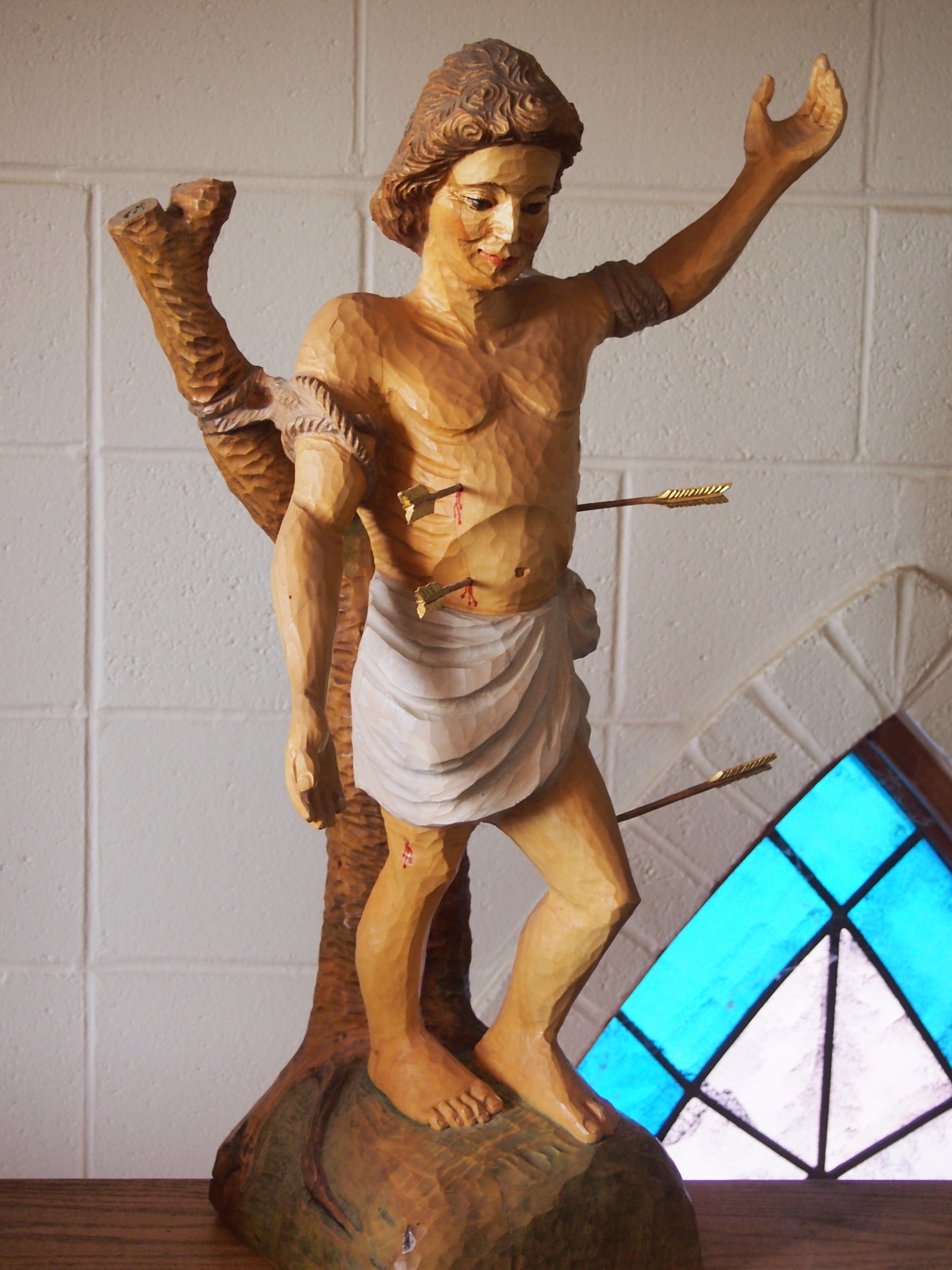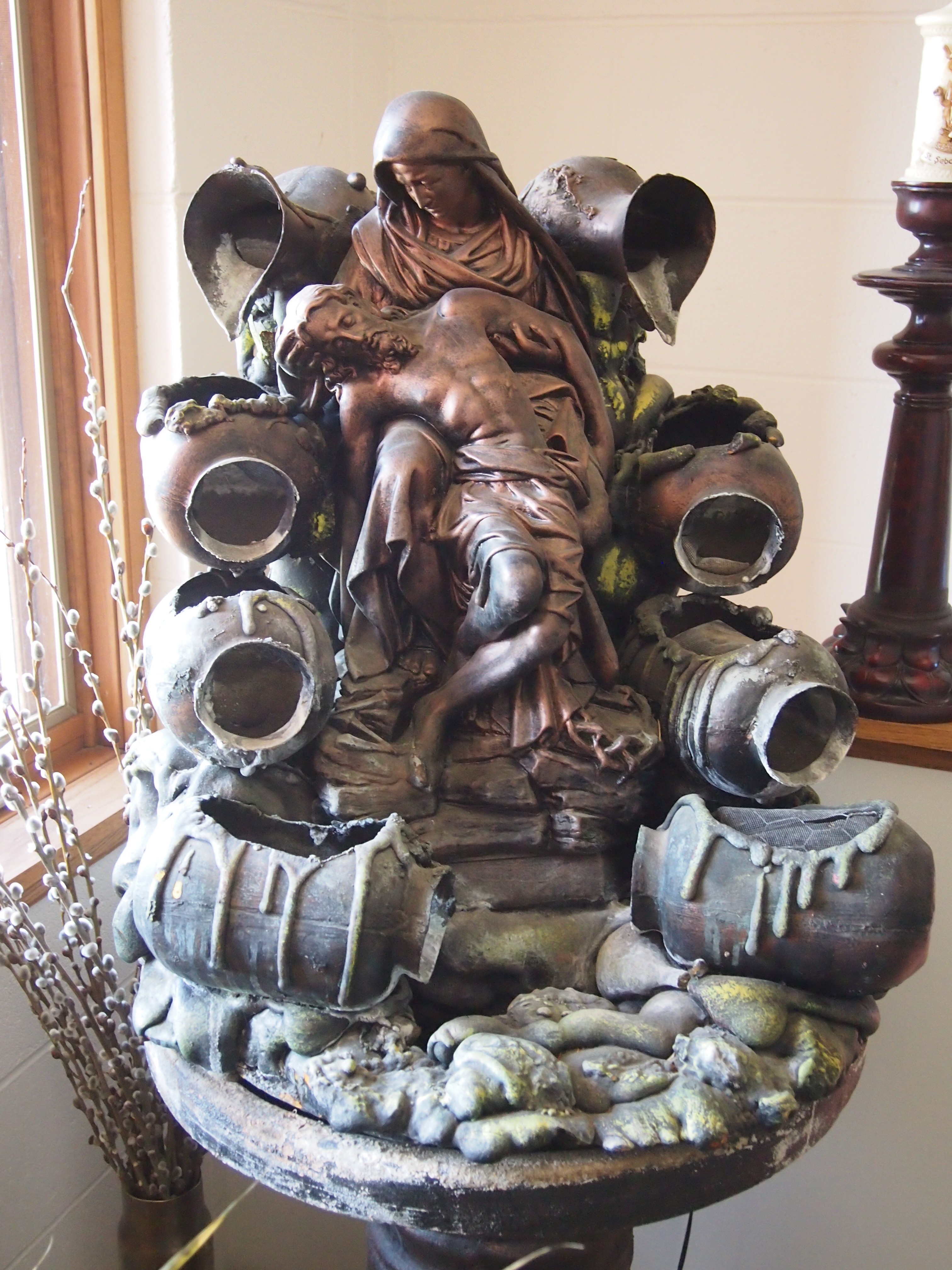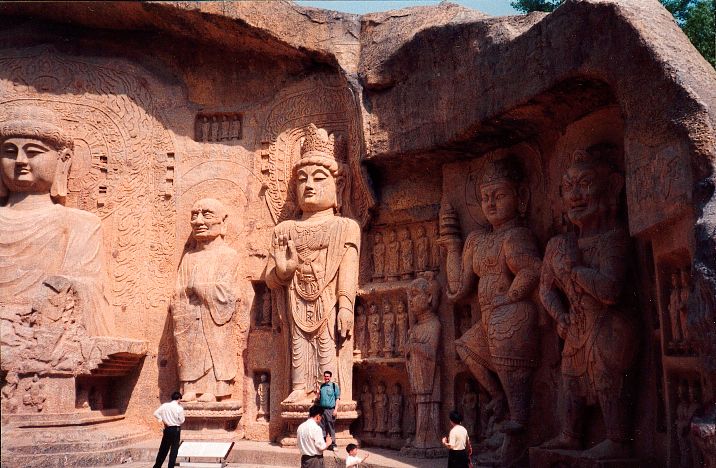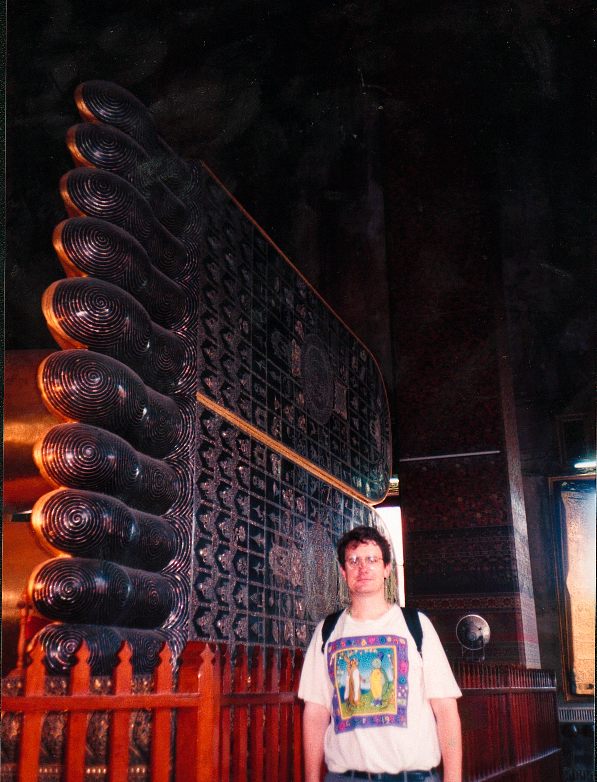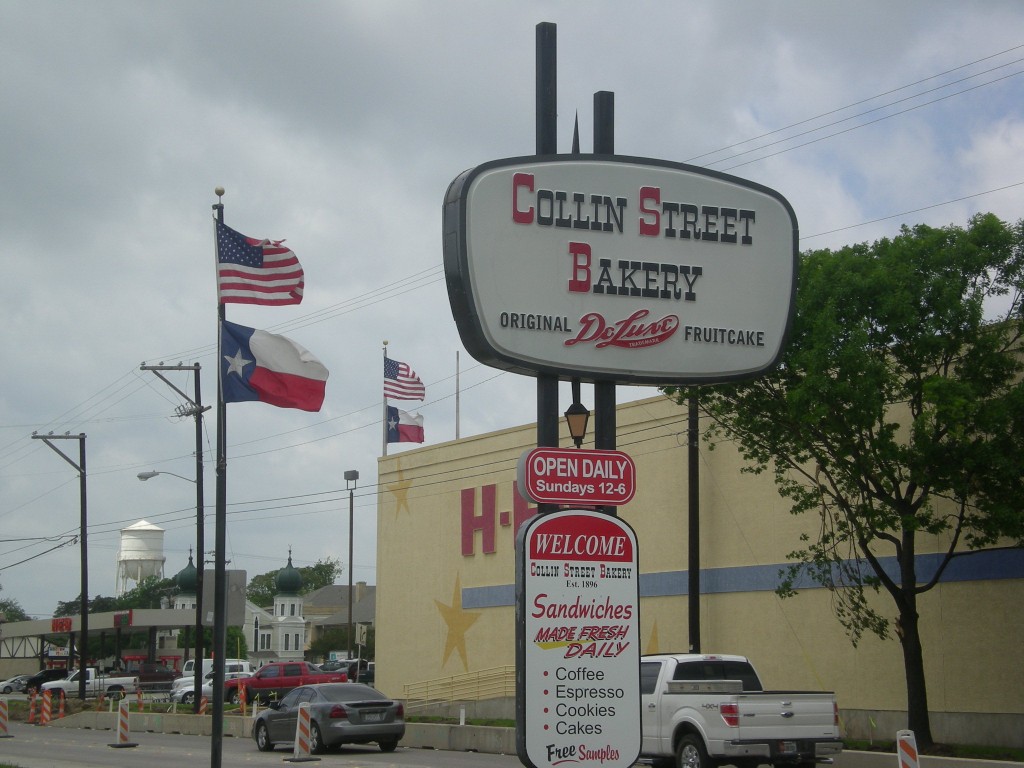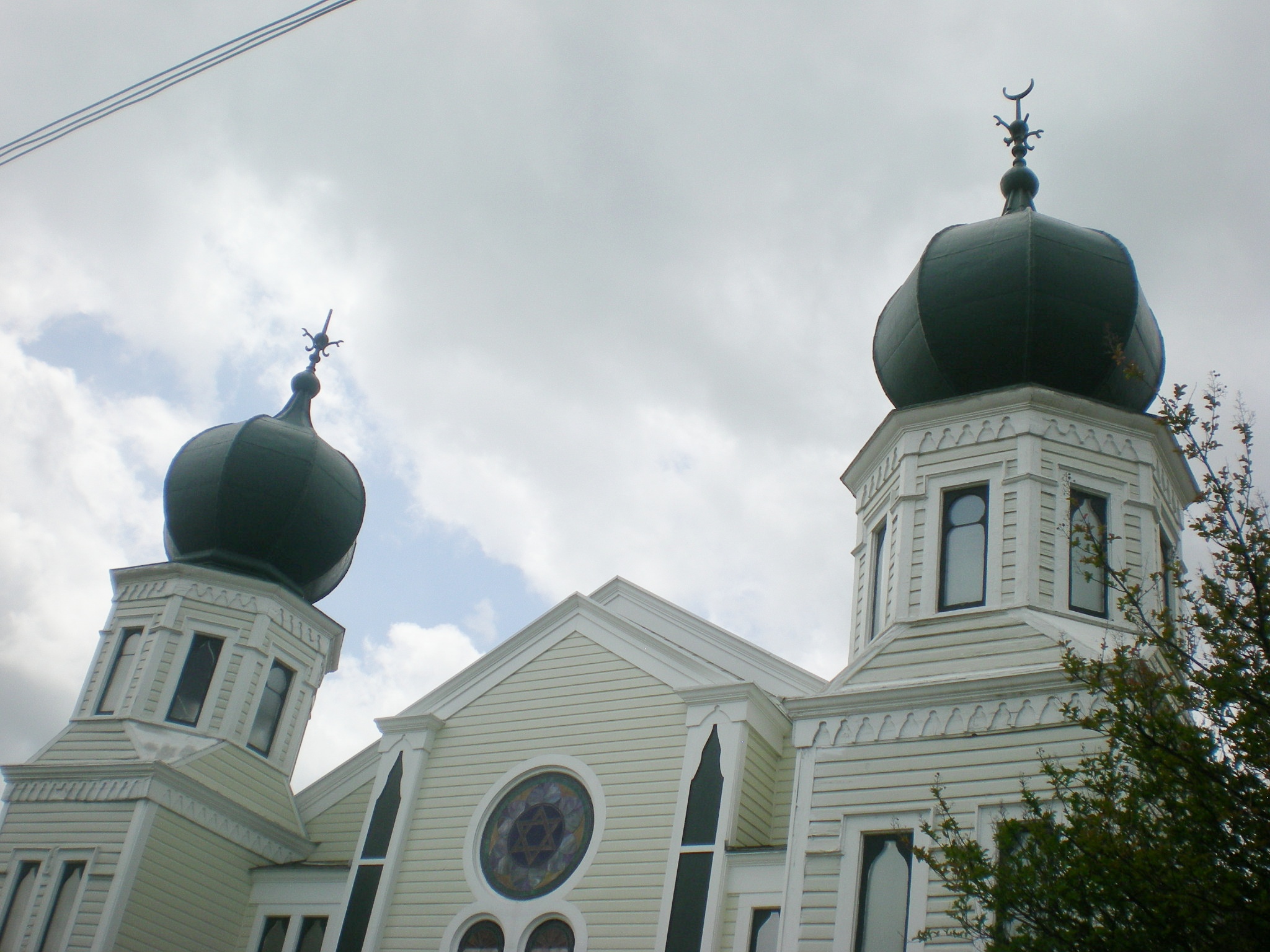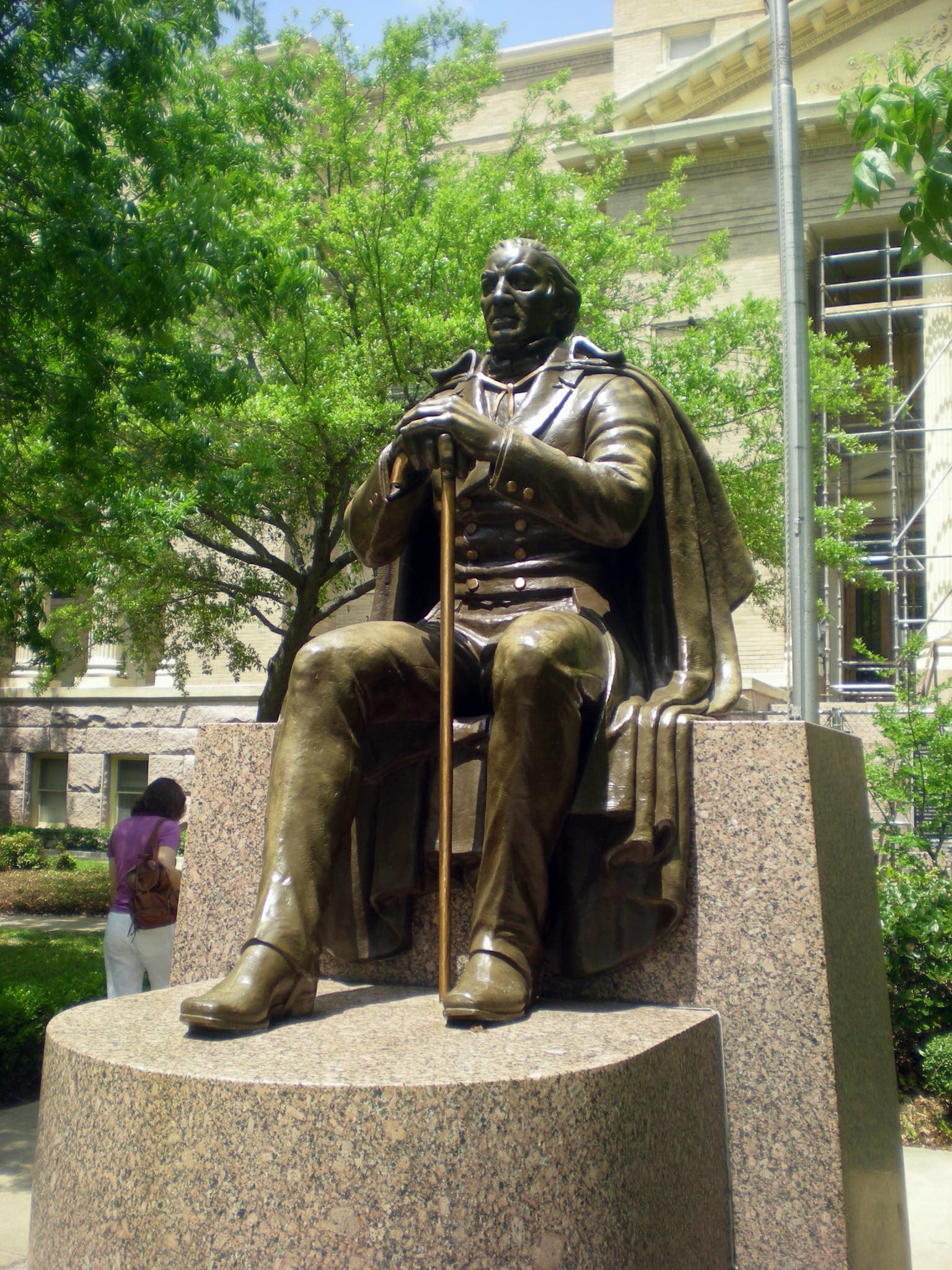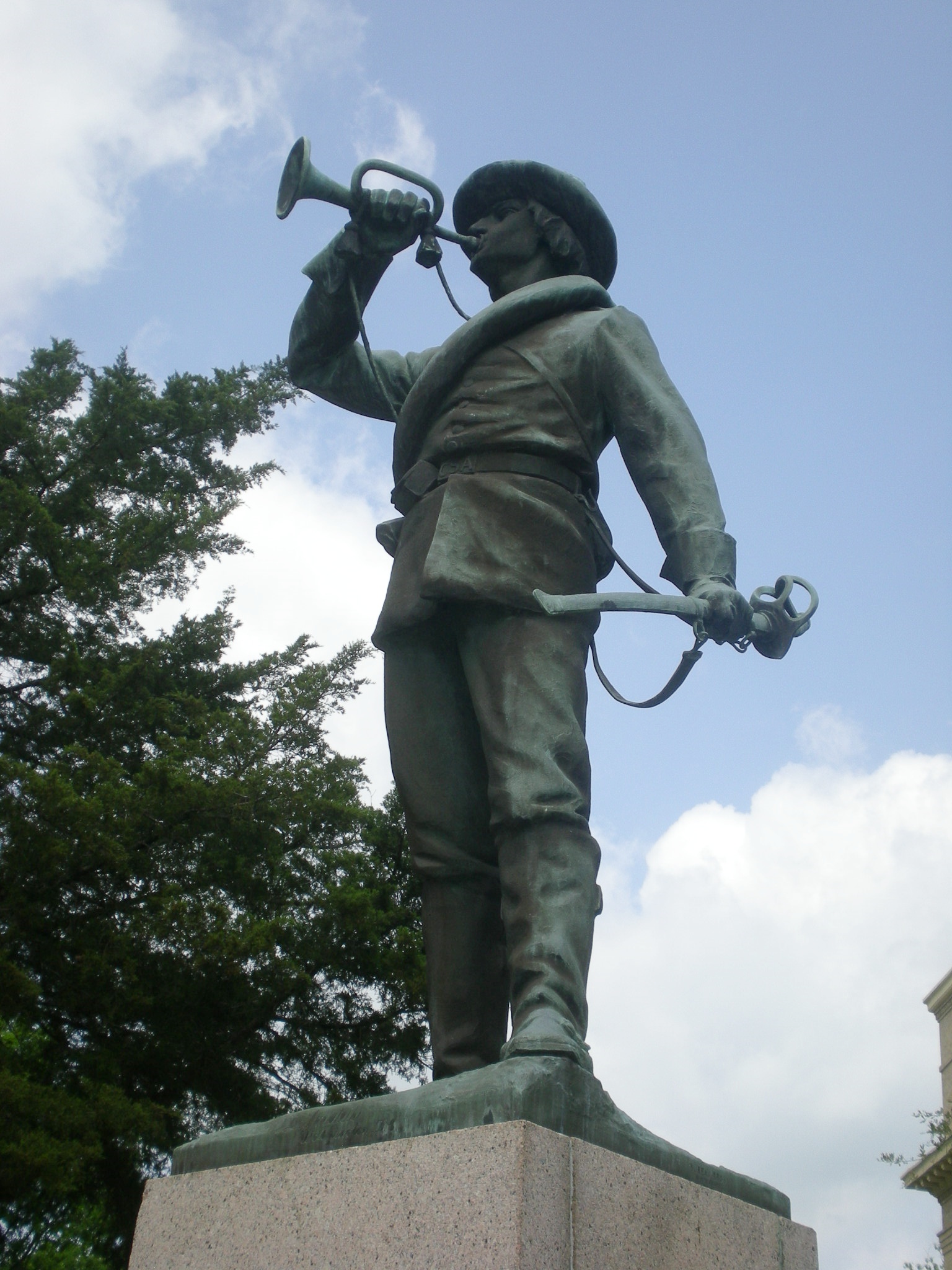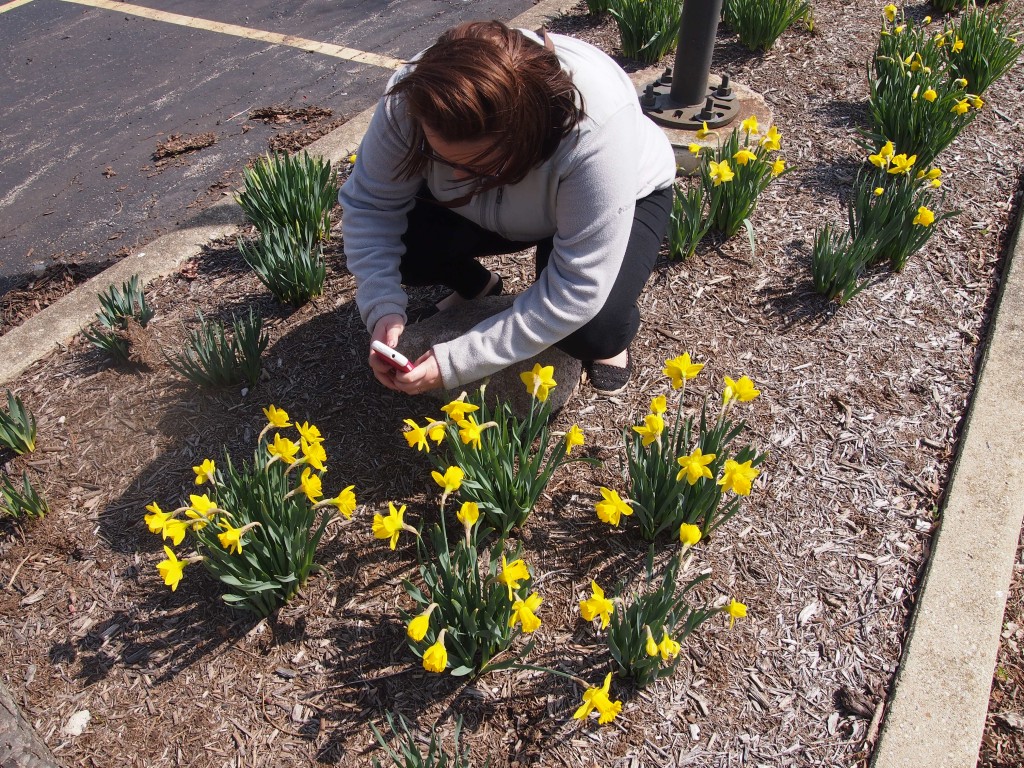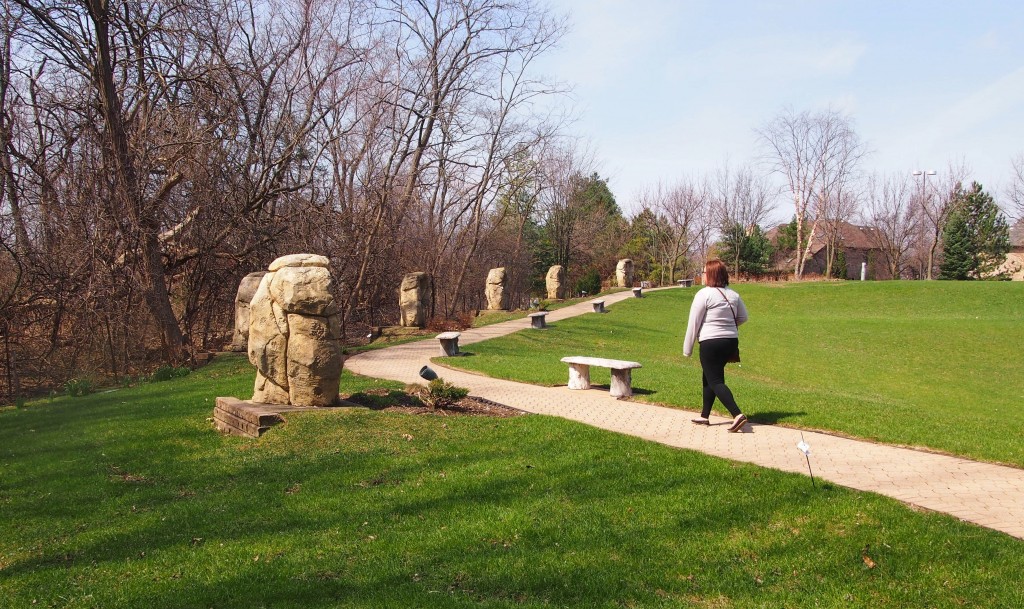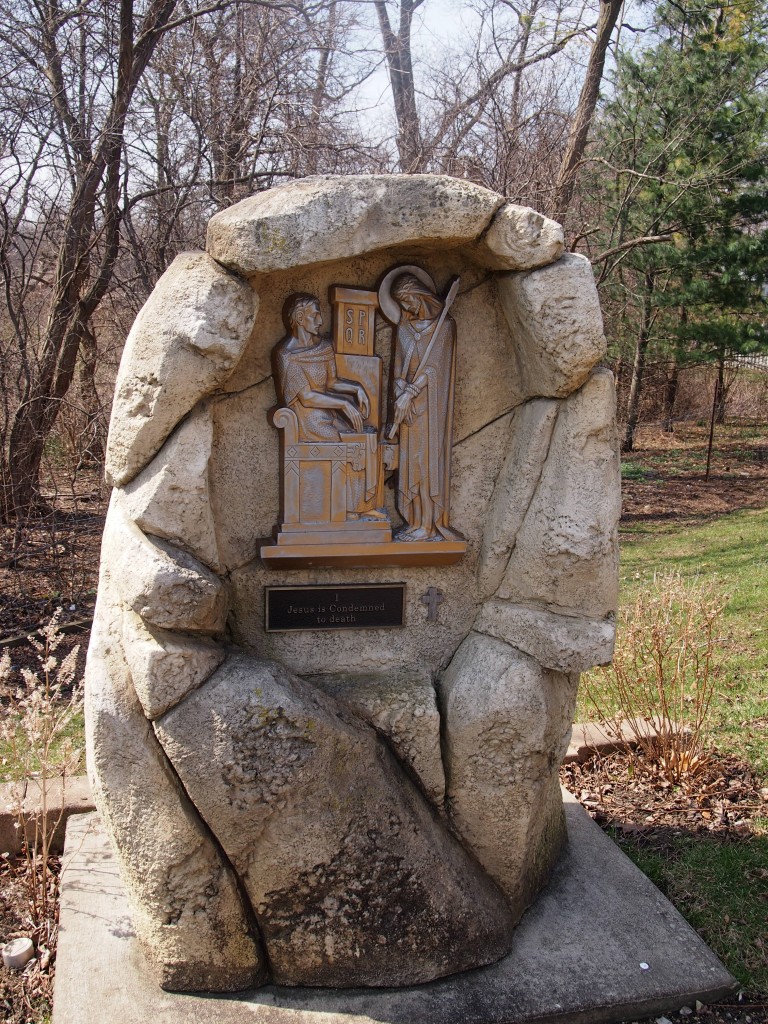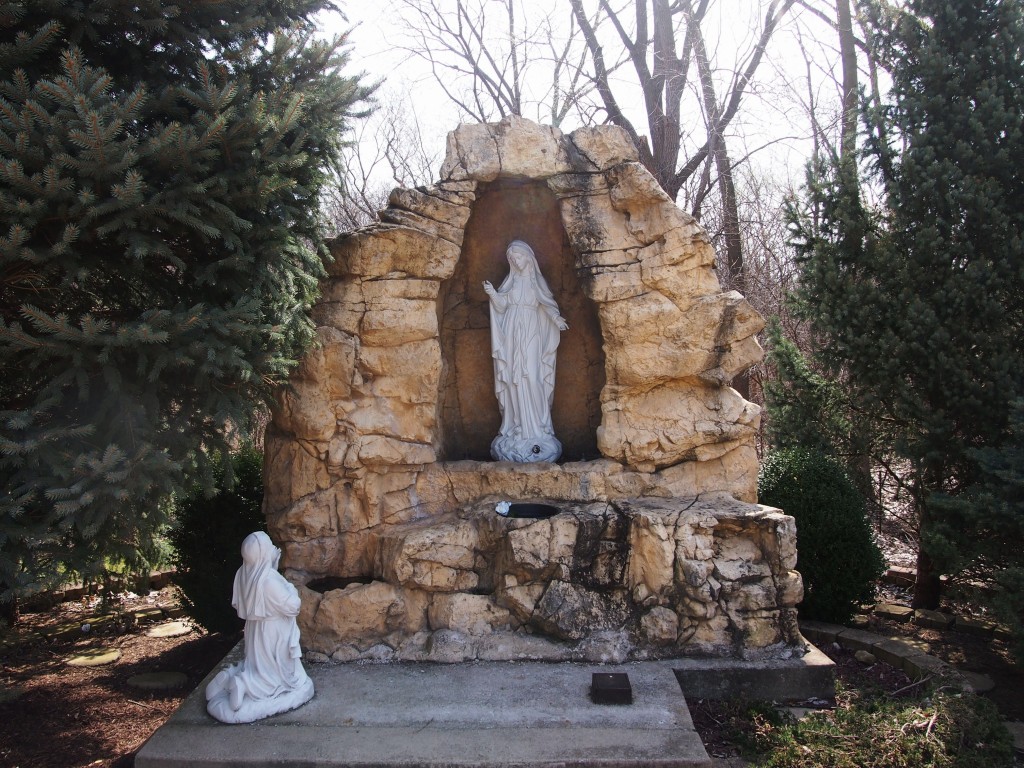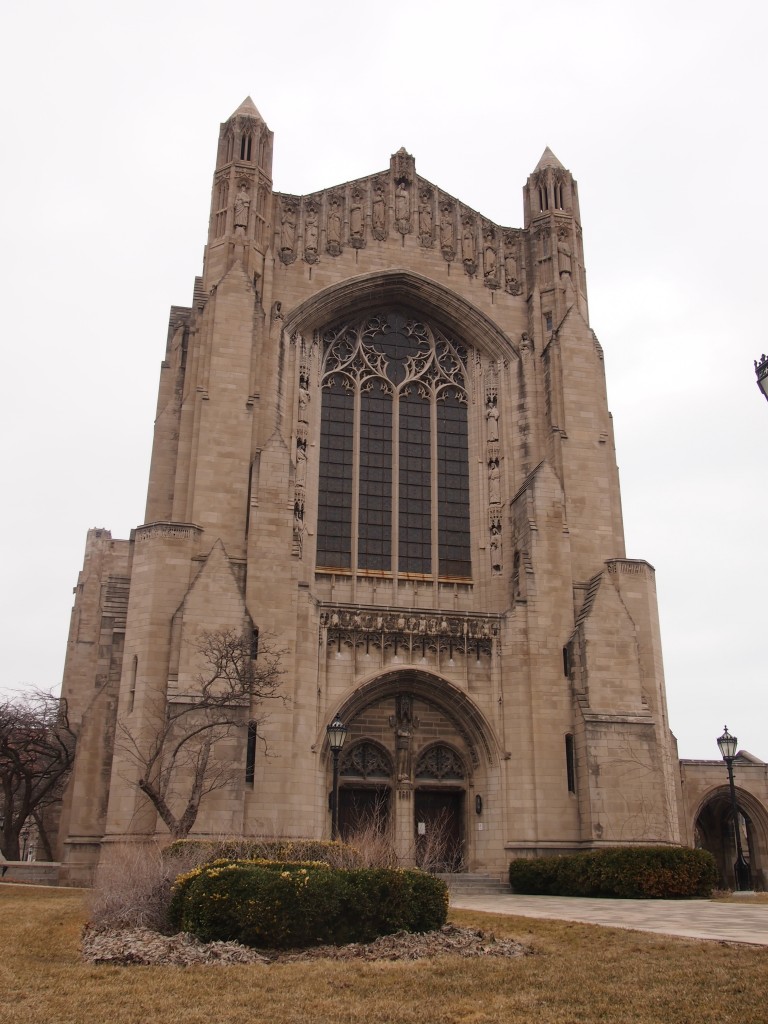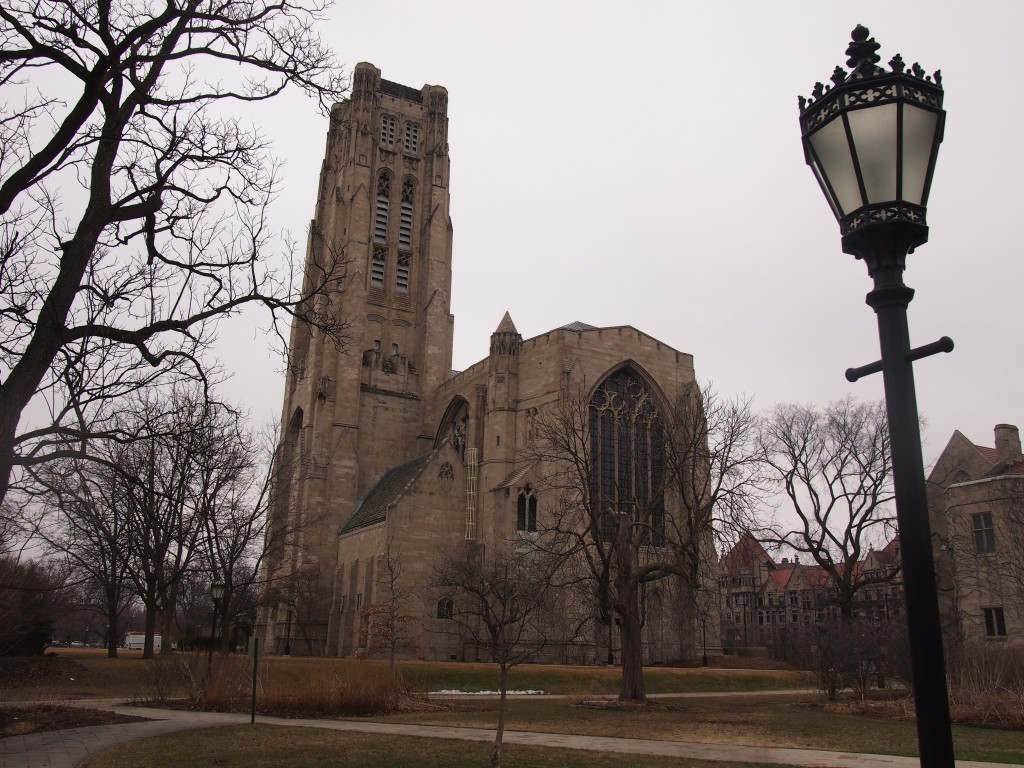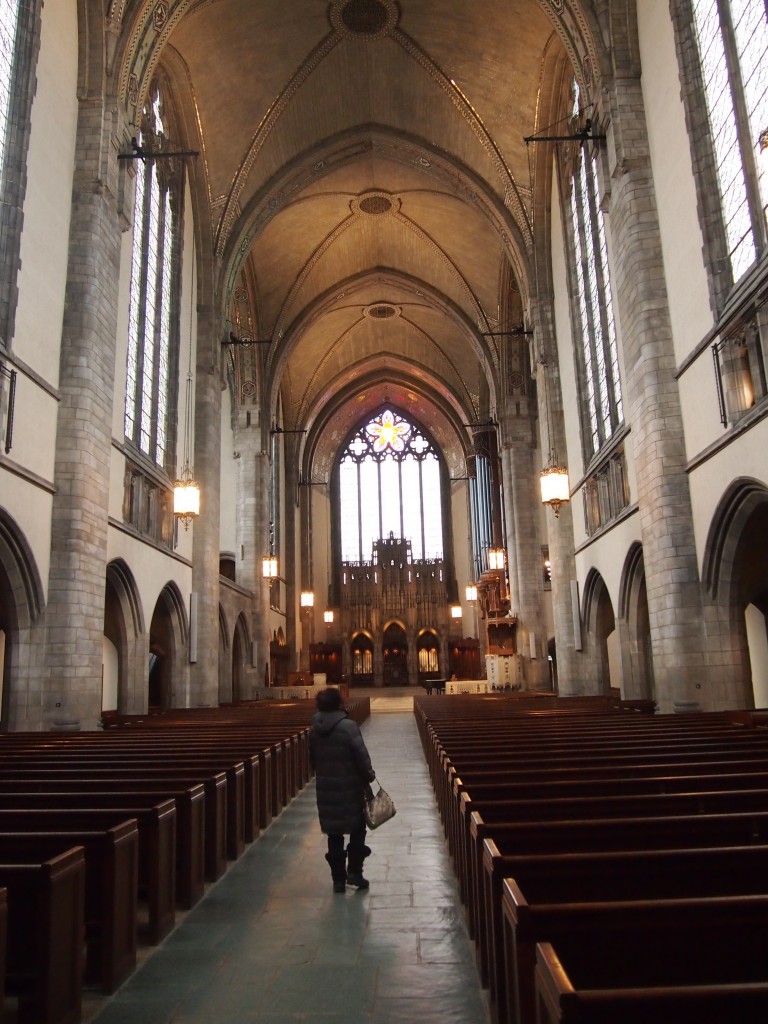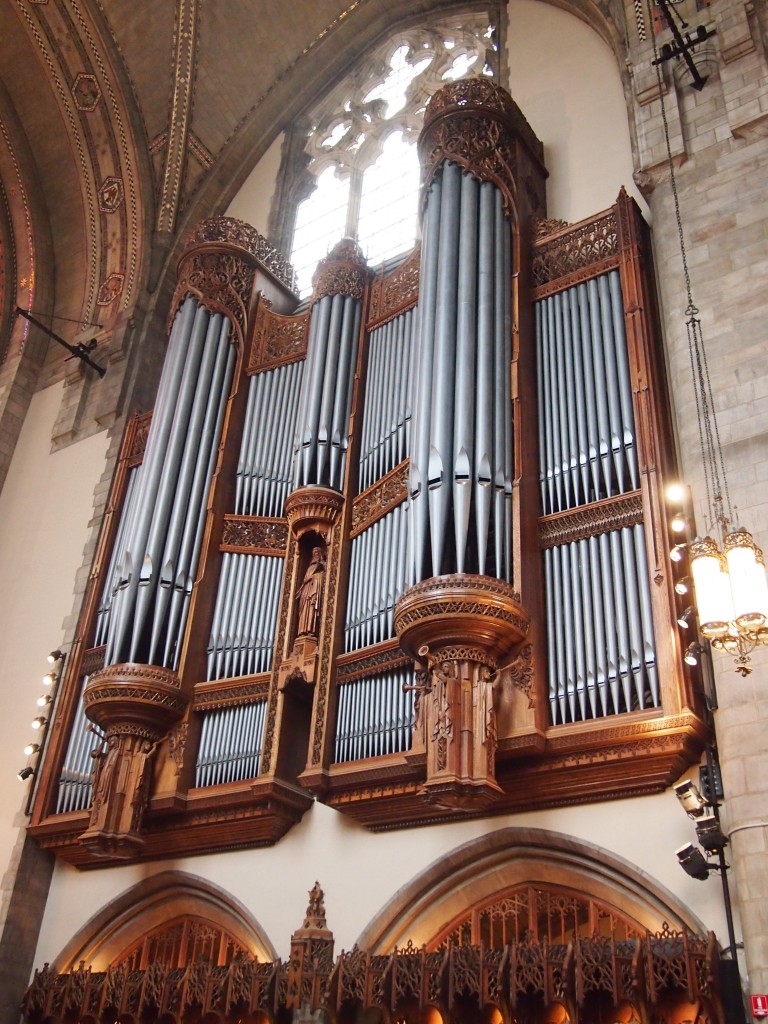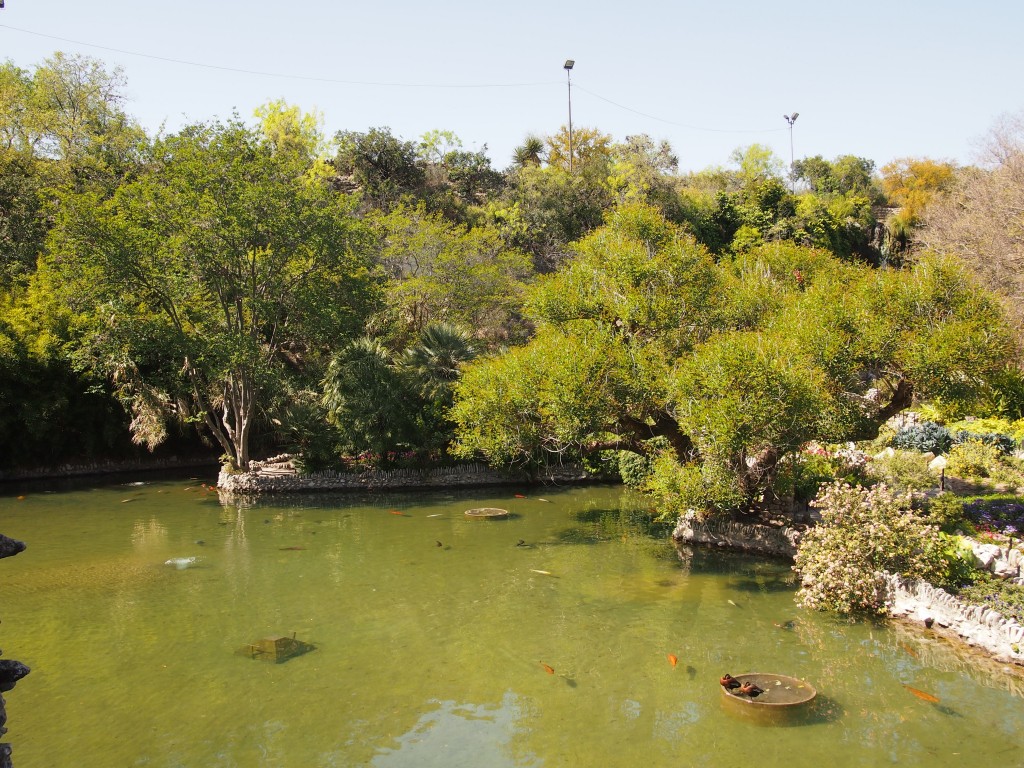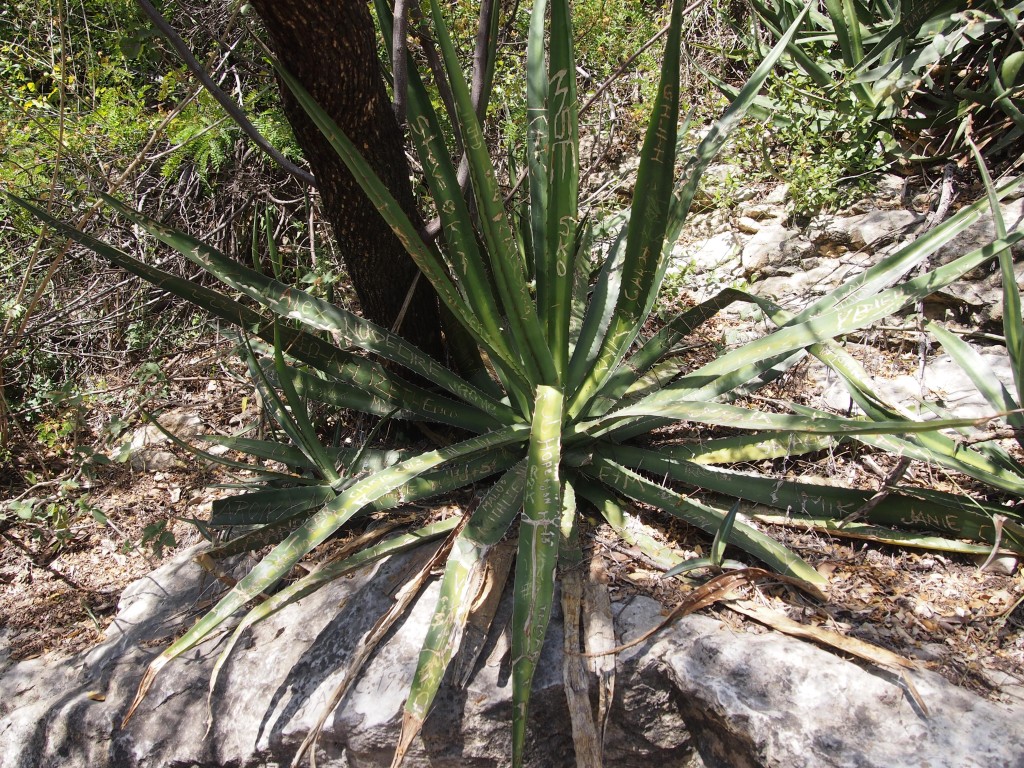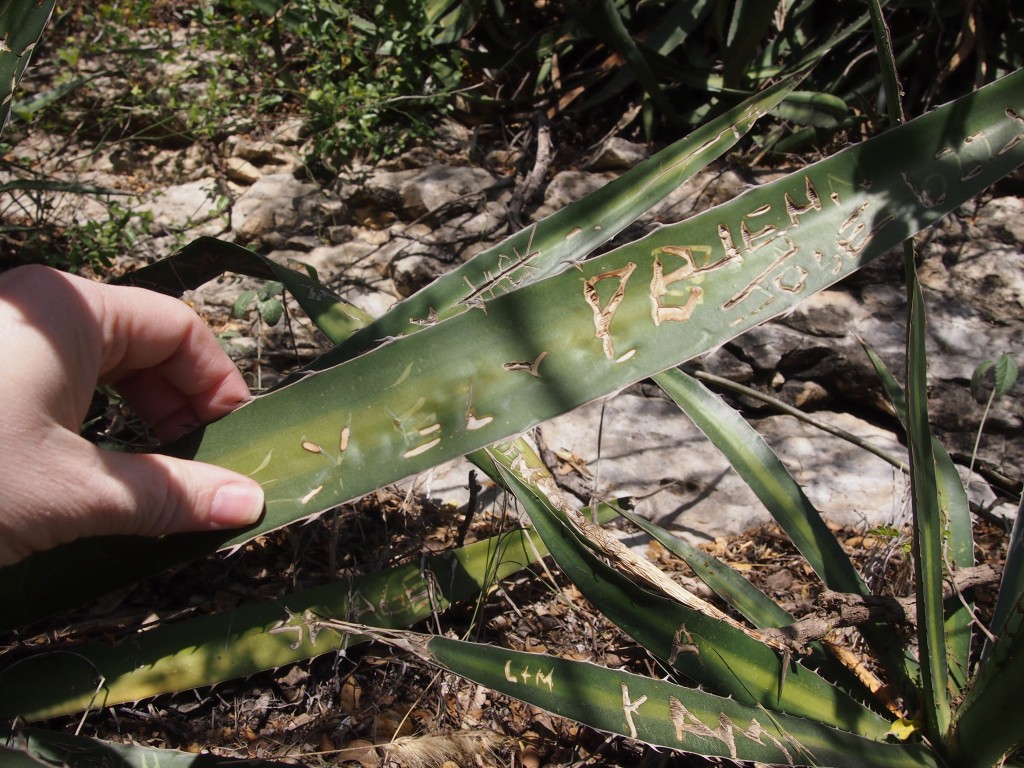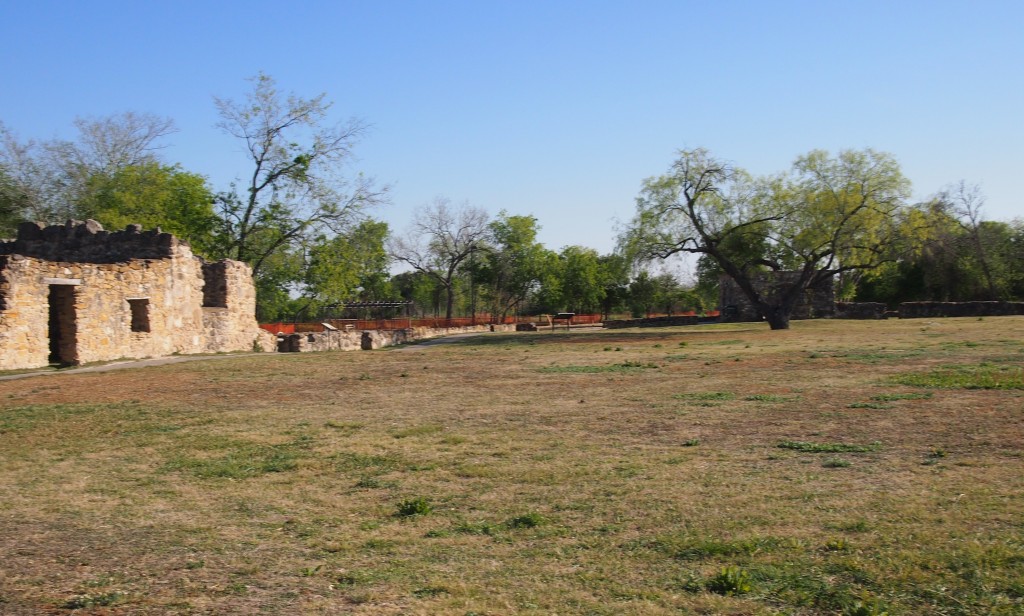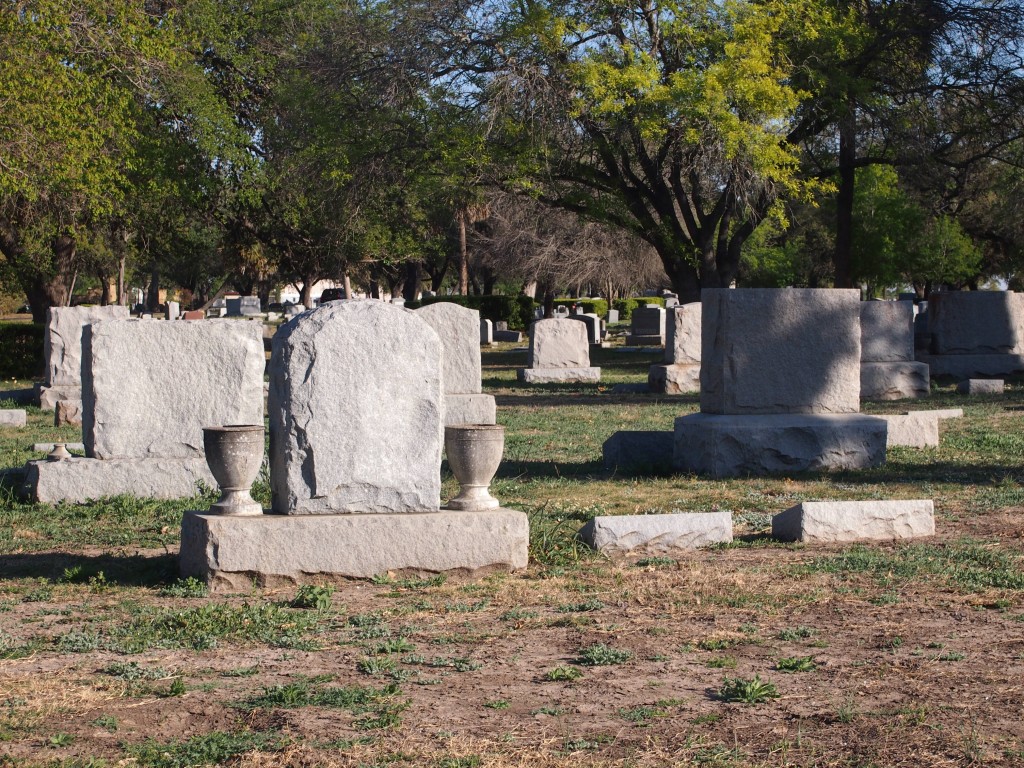One reason I wanted to peek inside St. Stanislaus Kostka Catholic Church not long ago when I was in Chicago – it’s not far east of Humboldt Park – was that I knew it would be open. I knew that it would be open because the iconic monstrance inside is the focus of 24-hour Eucharistic adoration. Here it is.
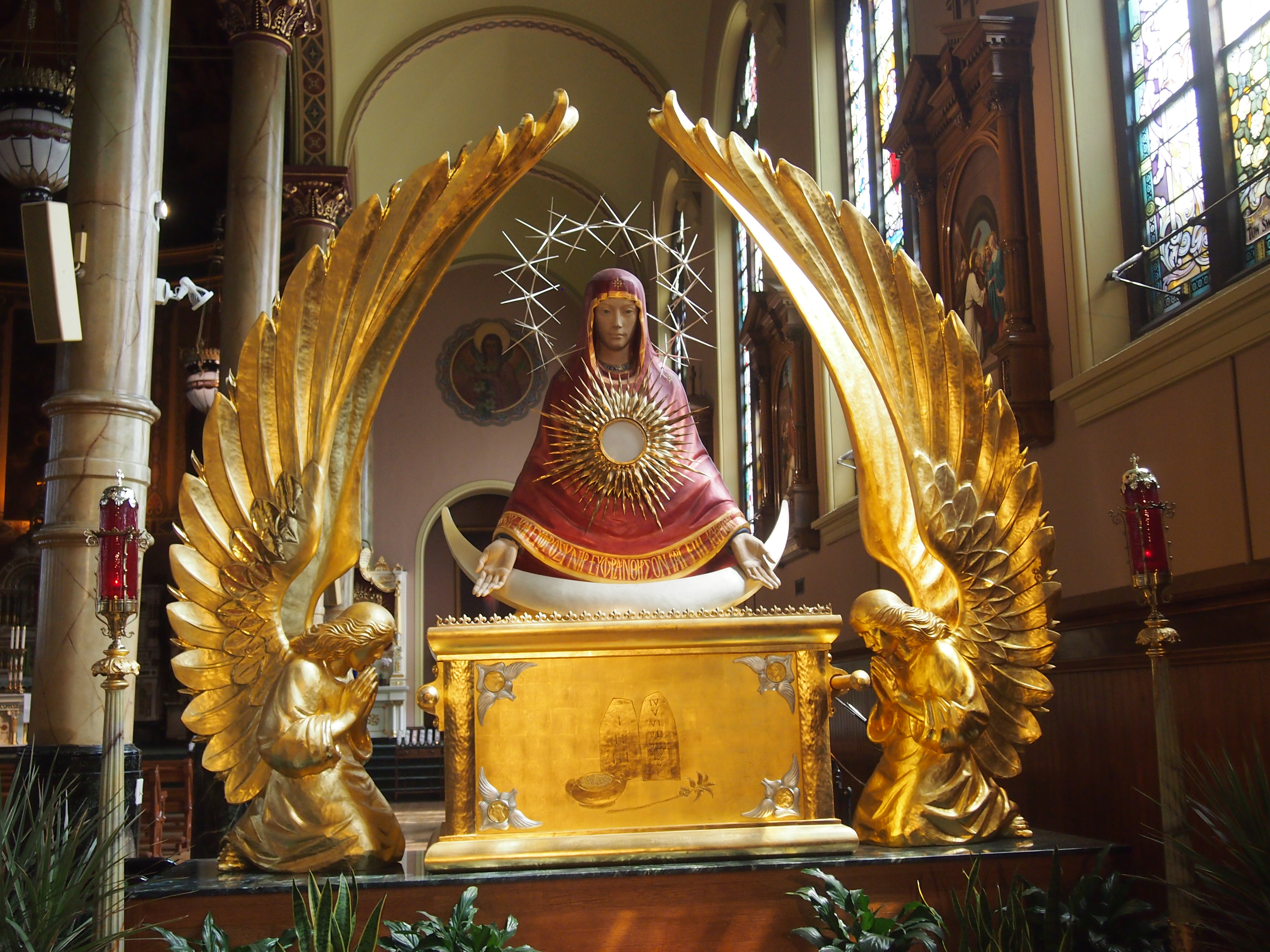 I found a press release, of all things, that describes the monstrance on the occasion of its unveiling in 2008: “The gilded receptacle has taken sculptor Stefan Niedorezo two years to carve from linden wood using Renaissance methods. The iconic monstrance is nine feet tall and weighs 700 pounds. Malgorzata Sawczuk applied the gilding and serves as project conservator.
I found a press release, of all things, that describes the monstrance on the occasion of its unveiling in 2008: “The gilded receptacle has taken sculptor Stefan Niedorezo two years to carve from linden wood using Renaissance methods. The iconic monstrance is nine feet tall and weighs 700 pounds. Malgorzata Sawczuk applied the gilding and serves as project conservator.
“The monstrance depicts the Blessed Mother as the link between the old and new covenants. She stands over the Ark of the Covenant, a sacred container that held the stone tablets inscribed with the 10 Commandments. Mary is ‘clothed with the sun, with the moon under her feet, and on her head a crown of twelve stars,’ as depicted in the Book of Revelation (Rev 11:19 and 12:1-2).”
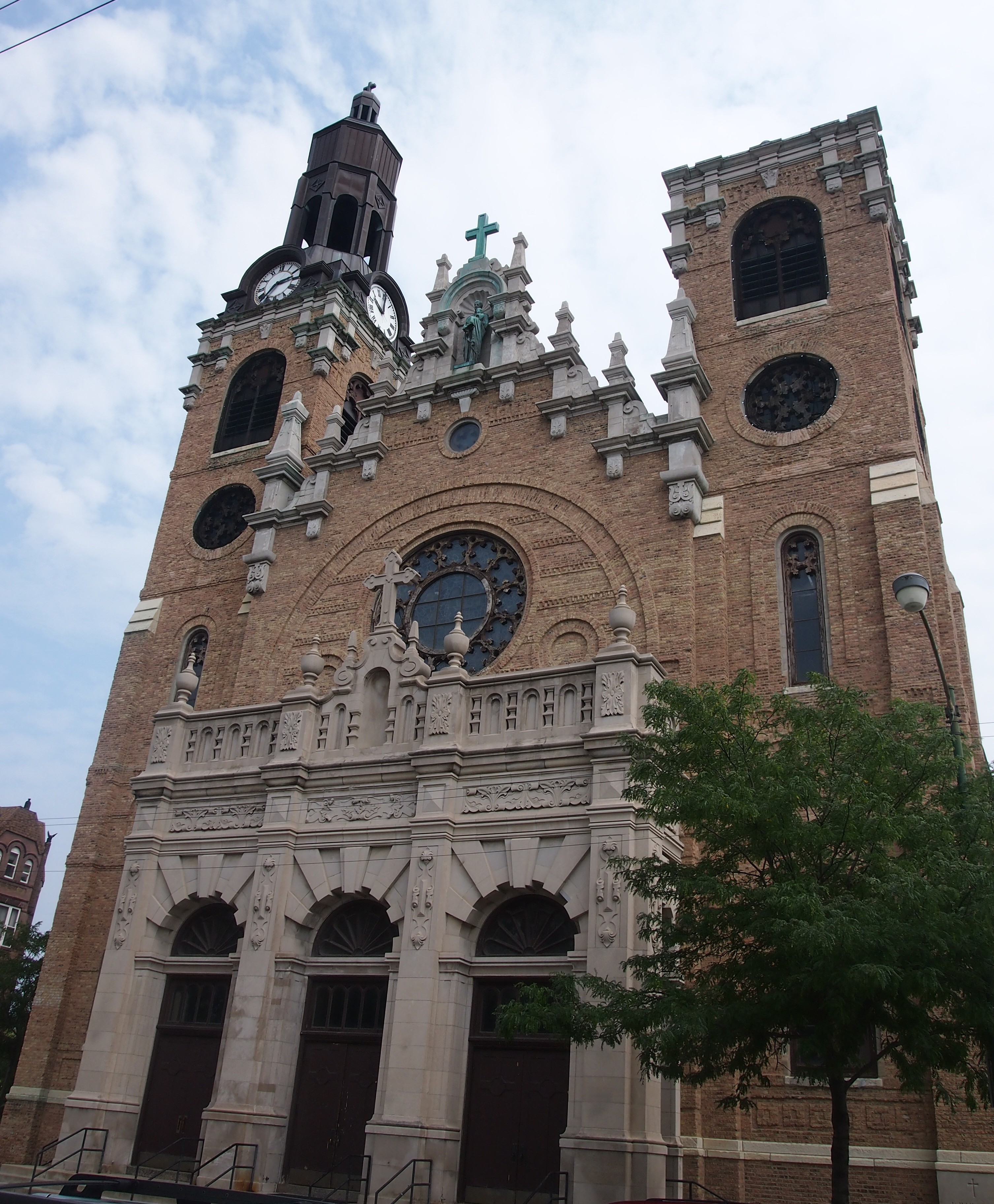 St. Stanislaus Kostka is largely a Polish parish (masses in Polish, English and Spanish these days), and the 1870s structure is near the Kennedy Expressway. So near, in fact, that it was slated for demolition to build the highway back in the 1950s, when the Robert Moses school of road building was still in style (whatever’s in the way, knock it down). Ultimately the road was shifted to avoid the church, in a feature known as the Rostenkowski Curve, though apparently that politico (U.S. Rep. Dan Rostenkowski, who died a few years ago) wasn’t instrumental in saving the church. A lesser-known local politician, Bernard Prusinski, was.
St. Stanislaus Kostka is largely a Polish parish (masses in Polish, English and Spanish these days), and the 1870s structure is near the Kennedy Expressway. So near, in fact, that it was slated for demolition to build the highway back in the 1950s, when the Robert Moses school of road building was still in style (whatever’s in the way, knock it down). Ultimately the road was shifted to avoid the church, in a feature known as the Rostenkowski Curve, though apparently that politico (U.S. Rep. Dan Rostenkowski, who died a few years ago) wasn’t instrumental in saving the church. A lesser-known local politician, Bernard Prusinski, was.
Whoever kept it from being bulldozed, I’m glad. Your don’t have to be Polish or Catholic to appreciate such a handsome brick church, which I understand recalls major Polish churches of earlier centuries, though in fact designed by an Irish architect, Patrick Charles Keely. He also did Holy Name Cathedral on the near North Side, as well as a lot of other Catholic churches in a lot of places. The man was riding the wave of Catholic immigration to the U.S. in the latter decades of the 19th century, which spurred the demand for more churches.
Note that it only has one belfry. Lightning took another one down 50 or so years ago, but I like the asymmetry.
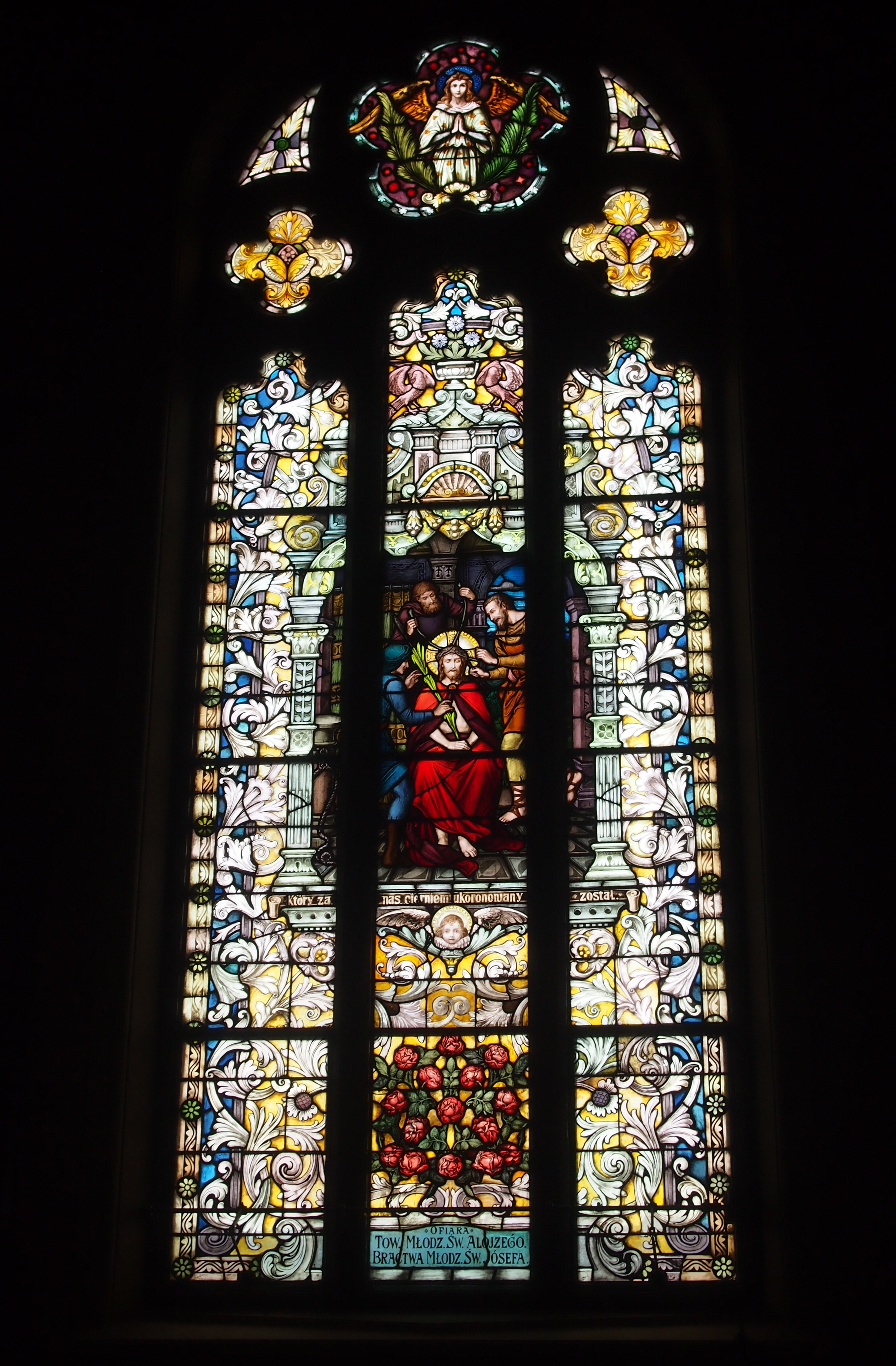 The church also has some superb glass in its ornate interior.
The church also has some superb glass in its ornate interior.
